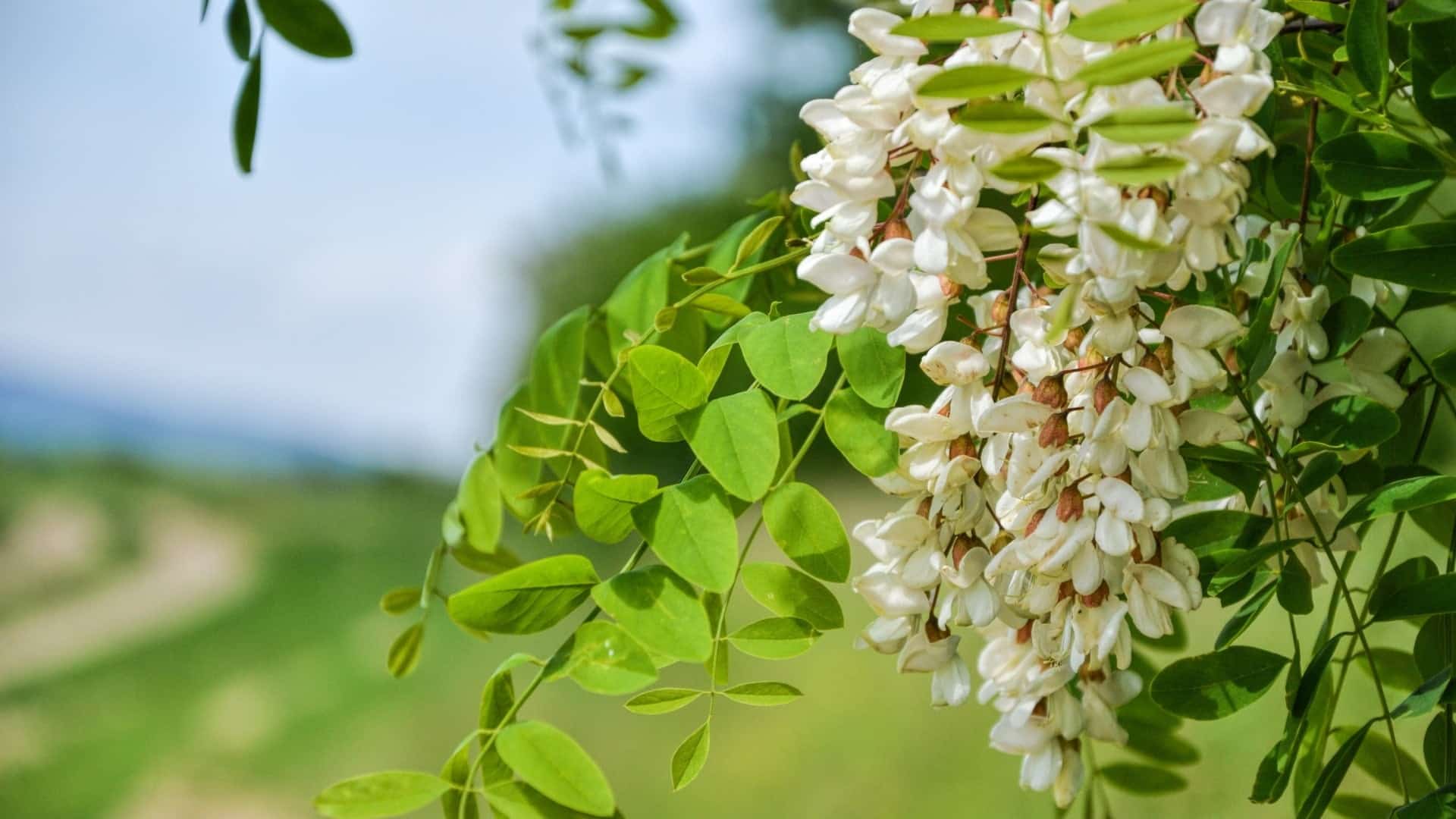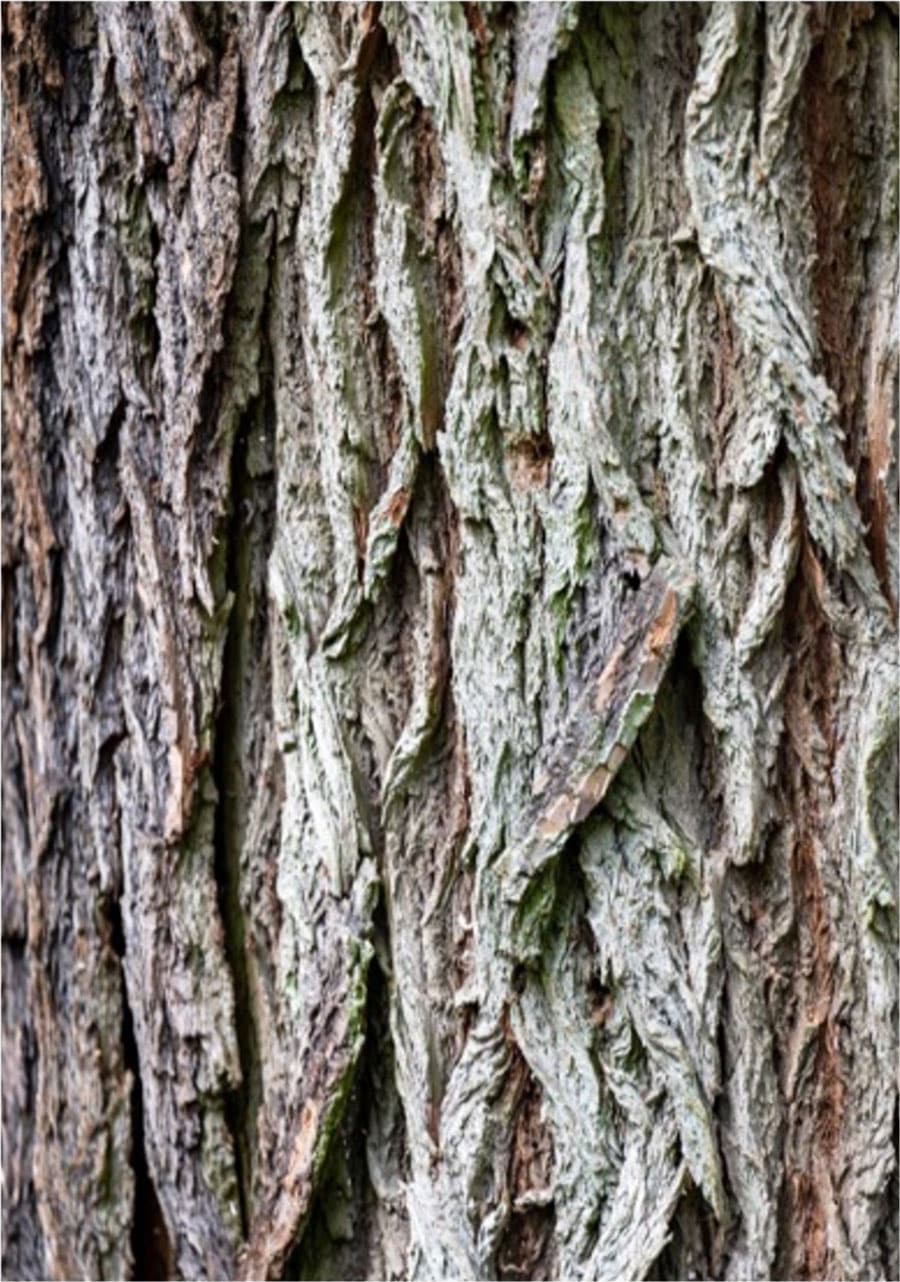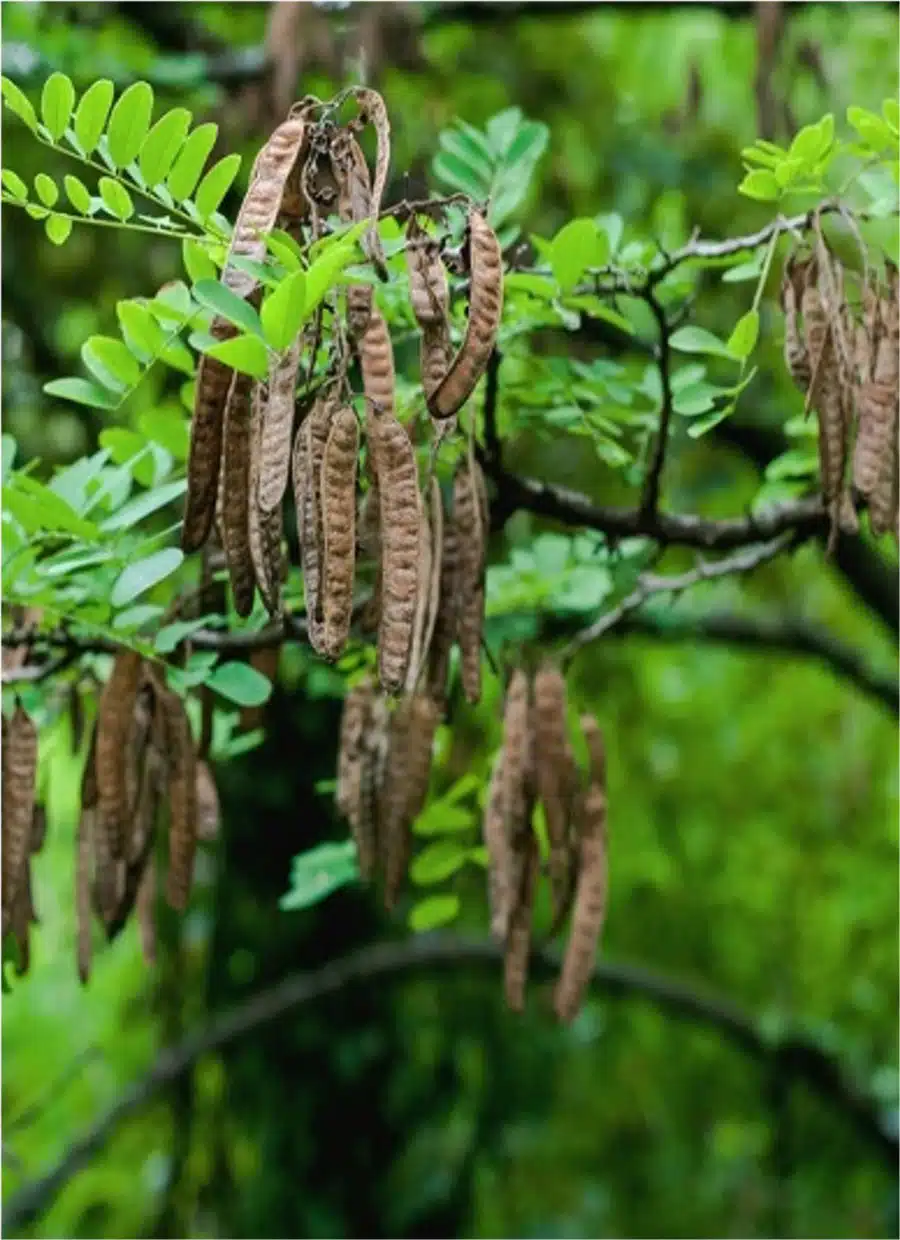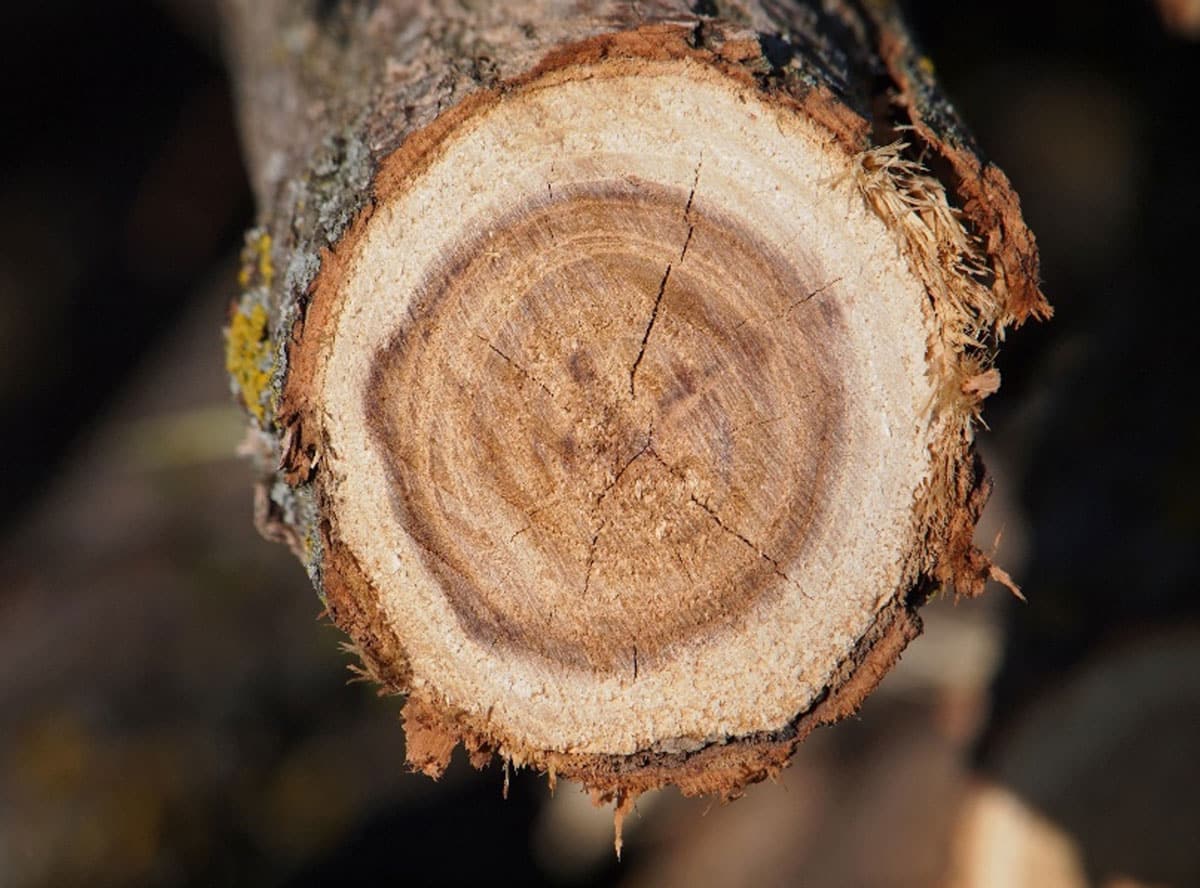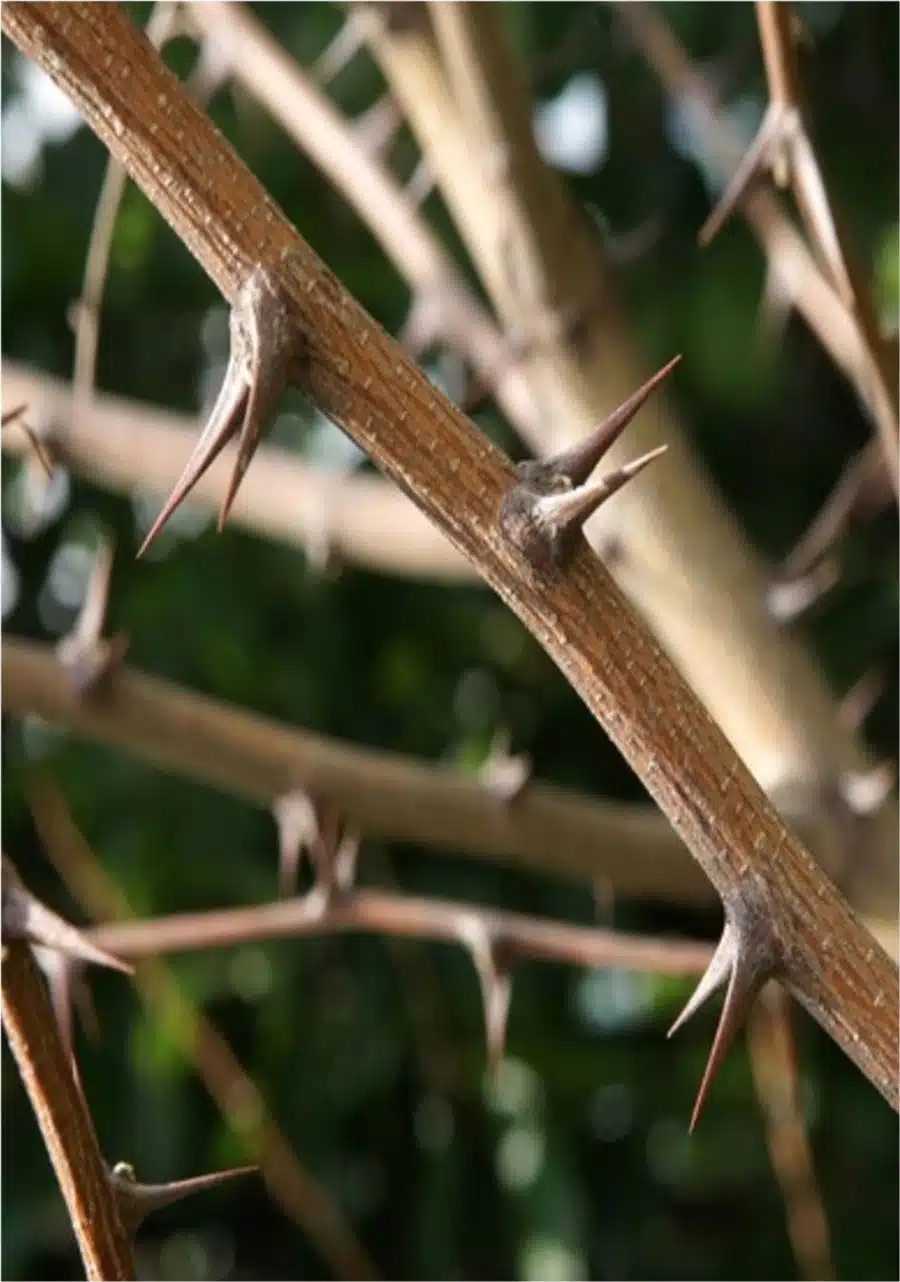Black Locust
Robinia pseudoacacia
General info
Black locust is a medium-sized hardwood deciduous nitrogen-fixing tree. The tree is native to a small region in southern United States, but it has been transplanted across the globe in temperate and sub-tropical regions. Black Locust is one of the most commonly planted commercial hardwood trees with an estimated 2.5 million ha in lumber and energy production globally. In Hungry, black locust account for over 20 percent of forested land.
Black locust is a fast-growing tree, often growing to a height of between 12 to 30 meters high depending on the cultivar. It has pinnately compound leaves of 6 to 14 inches long that are alternately arranged along short branches. Each leaf includes 7 to 19 leaflets that are 1 to 2 inches long and has an open canopy structure. The leaves are dark blue-green in summer and turns yellow-green in fall. Depending on the cultivar, some trees have thorns at the base of the leaves.
The tree produces large white or rose-pink flowers which appear in large dense cluster on the tree and produces a powerful fragrance. The flowers attract honeybees in late spring providing a nectar resource for pollinators. The honeybees in return pollinate the tree.
Black locust produces pea-like fruit pods of 5 to 10 cm long and 1-2 cm wide which usually contains about 4 to 8 seeds. The seeds mature in autumn and persist through winter until early spring. The trunk is usually black and grey and has many deeply furrowed ridges and grooves that forms diamond shapes. The roots have nitrogen fixing nodules, meaning the tree has limited fertiliser requirements.
The wood from black locust is one of the hardest woods worldwide. It is pale yellowish brown, dense, hard, durable, and resistant to rot.
Invasiveness of Black Locust
Black locust is considered an invasive species. And is classified as one of the top 100 woody invaders worldwide. It can quickly colonise, out competing other species of trees and shading out competitors. The suckering roots of black locust spread quickly and form many suckers resprouting into new shoots. Black locust shed its seeds and spread to establish new seedlings. The seeds can remain dormant for close to 10 years.
Farmers should consider monitoring the spread of the black locust seeds and suckers outside the planted location to minimize seedling establishment. The spread of black locust can to a limited extent on small scale be controlled by hand pulling, mowing, constantly removing the suckers from both the roots of the trees and from the trunk to minimize regrowth. However, these methods may not completely eradicate the establishment of seeds.
Site Suitability
Black locust is a good pioneer species which is shade intolerant and requires a lot of sun. Black locust thrives in moist loamy well drained soils but can tolerate dry nutrient poor soils also. It can tolerate a range of pH’s across European plantations (3.2–8.8) with an optimum range of 5.5–7.0. Optimum conditions ensure the productivity of root-associated nitrogen fixing bacteria, which can help to fix between 75–150 kg of N ha-1 yr-1. It can tolerate a range of altitudes, though it grows best between 600–700m above sea level.
Establishment and management
Black locust can be propagated by seed, root, or stem cuttings. When planting by seed, boiling water or sulfuric acid treatment will be required due to the hard seed coat. Plant black locust between November and March.
Black locust is fast growing producing large amounts of biomass which can be easily coppiced. The tree produces high-density wood which can be harvested and produced into pellets with high energy content.
Utilised normally on a 1–3-year rotation period, it can grow to heights of 10m within 5 years with coppice growth from stool shoots having been demonstrated maximums of 4.9m a year in certain studies. The volume growth from coppice stands has been shown to range between 10 – 16 m3 ha-1 y-1 as early as 5–10 years into cycles. However, over time, if regeneration of stands is performed from stool shoots, a decreasing trend of wood production is observed, necessitating the need for regenerating plantations via seed or root sucker alternatives periodically. This leads to many strategies currently employing 2–3 coppice cycles, or at most 5 cycles in some studies, before stools are removed and replanted from other sources.
The yield of black locust varies according to location, harvest timing, and agronomic practices. A study in Hungry reported average yield of 6.5 Mg ha-1 yr-1 at dense spacing of 22,000 plants per hectare on a 5-year for cultivars such as Üllői, Nyírségi, Jászkiséri, Kiscsalai.
Pests and diseases
The most common pest is the black locust borer (Megacyllene robiniae). The larvae burrow into and weaken the tree’s trunk and branches. Although black locust can survive locust borer attack, the damage causes stunted growth and internal decay which makes the tree more susceptible to breaking apart in very windy conditions.
The locust leaf miner (Odontota dorsalis) and the black locust gall midge (Obolodiplosis robiniae) are another main pest which affects black locust. The locust leaf miner causes the leaves to turn brown in the summer. The black locust gall midge causes gall formation and premature leaf drop. Other insect pest includes the sawfly larvae, bag worms, leaf and tree hoppers, aphids, and carpenter moths.
Although black locust has many pests and insects, many of these diseases seldomly kill the tree. Fortunately, the main pests – black locust borer and locust leaf miner – is not yet present in the UK.
Insecticide treatment may be required for treating pest and disease infestation, however, maintaining good growing conditions, and preventing insect attack is essential especially during the first one to three years of growth. Interplanting with other species may reduce susceptibility to pest and disease attacks.
Benefits and uses of Black Locust
- Soil improvement: Black locust is able to fix nitrogen which is ultimately returned to the soil. This increases the presence of nitrate, ammonium in the soil.
- Reclaiming/rehabilitating degraded soils: When grown on marginal lands with low soil fertility it has the potential to improve soil fertility due to its ability to fix atmospheric nitrogen. Black locust has been used in mine reclamation in Germany and in reclaiming degraded lands in Romania.
- Prevention of soil erosion: Its extensive root system and prolific suckering can prevent soil erosion, and on previously eroded soils increase soil porosity, soil organic matter, nitrogen, and phosphorus.
- Source of food for pollinators: The flowers are important source of food for honeybees, leading to the production of high-quality honey.
- Improve biodiversity: Black locust is fast growing tree and host to many species of insects, mammals, and birds.
- Windbreaks and shelterbelts: Black locust is used as windbreaks, shelterbelts, shade and shelters for animals in silvopasture grazing systems.
- Hard wood: The wood from black locust is one of the hardest wood and is highly rot resistant, making it an ideal material for fenceposts, poles, furniture, wooden panelling, flooring and firewood.
- Raw material for other products: Black locust is used as raw material in biotherapy, apiculture, food industry, landscaping, and many other products.
Return to crops overview
Relevant research
Straker, K. C., Quinn, L. D., Voigt, T. B., Lee, D. K., & Kling, G. J. (2015). Black locust as a bioenergy feedstock: a review. Bioenergy Research, 8(3), 1117-1135.
Nicolescu, V. N., Rédei, K., Mason, W. L., Vor, T., Pöetzelsberger, E., Bastien, J. C., … & Pástor, M. (2020). Ecology, growth and management of black locust (Robinia pseudoacacia L.), a non-native species integrated into European forests. Journal of forestry research, 31(4), 1081-1101.
Biomass Connect Trials
Black Locust ‘Turbo’ and Black Locust ‘Turbo Obelisk’ varieties are currently being grown as part of the Biomass Connect trials at the following hub sites:
- AFBI Hillsborough
- BGI Chesham
- IBERS Aberystwyth
- NIAB Headley Hall
- Newcastle University Cockle Park Farm
- Rothamsted Research North Wyke
- SRUC Ayrshire
- SRUC Edinburgh
